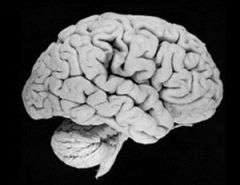The brain's GPS: Scientists find neurons linked to navigation in open environments

Using direct human brain recordings, a research team from Drexel University, the University of Pennsylvania, UCLA and Thomas Jefferson University has identified a new type of cell in the brain that helps people to keep track of their relative location while navigating an unfamiliar environment.
The "grid cell," which derives its name from the triangular grid pattern in which the cell activates during navigation, is distinct among brain cells because its activation represents multiple spatial locations. This behavior is how grid cells allow the brain to keep track of navigational cues such as how far you are from a starting point or your last turn. This type of navigation is called path integration.
"It is critical that this grid pattern is so consistent because it shows how people can keep track of their location even in new environments with inconsistent layouts," said Dr. Joshua Jacobs, an assistant professor in Drexel's School of Biomedical Engineering, Science and Health Systems, who is the team's primary investigator.
The researchers, Jacobs, Dr. Michael Kahana, from Penn, and UCLA's Dr. Itzhak Fried were able to discern these cells because they had the rare opportunity to study brain recordings of epilepsy patients with electrodes implanted deep inside their brains as part of their treatment. Their work is being published in the latest edition of Nature Neuroscience.
During brain recording, the 14 study participants played a video game that challenged them to navigate from one point to another to retrieve objects and then recall how to get back to the places where each object was located. The participants used a joystick to ride a virtual bicycle across a wide-open terrain displayed on a laptop by their hospital beds. After participants made trial runs where each of the objects was visible in the distance, they were put back at the center of the map and the objects were made invisible until the bicycle was right in front of them. The researchers then asked the participants to travel to particular objects in different sequences.
The team studied the relation between how the participants navigated in the video game and the activity of individual neurons.
"Each grid cell responds at multiple spatial locations that are arranged in the shape of a grid," Jacobs said. "This triangular grid pattern thus appears to be a brain pattern that plays a fundamental role in navigation. Without grid cells, it is likely that humans would frequently get lost or have to navigate based only on landmarks. Grid cells are thus critical for maintaining a sense of location in an environment."
While these cells are not unique among animals—they have been discovered previously in rats ¬¬— and a prior study in 2010, that used noninvasive brain imaging, suggested the existence of the cells in humans, this is the first positive identification of the human version of these cells.
"The present finding of grid cells in the human brain, together with the earlier discovery of human hippocampal 'place cells,' which fire at single locations, provide compelling evidence for a common mapping and navigational system preserved across humans and lower animals," said Kahana, a neuroscientist who is a senior author and professor of psychology at the University of Pennsylvania.
The team's findings also suggest that these grid patterns may in fact be more prevalent in humans than rats, because the study found grid cells not only in the entorhinal cortex—where they are observed in rats—but also, in a very different brain area—the cingulate cortex.
"Grid cells are found in a critical location in the human memory system called the entorhinal cortex," said Fried, who is a professor of neurosurgery at the David Geffen School of Medicine at UCLA. "This discovery sheds new light on a region of the brain that is the first to be affected in Alzheimer's Disease with devastating effects on memory"
The entorhinal cortex is part of the brain that has been studied in Alzheimer's disease research and according to Jacobs, understanding grid cells could help researchers understand why people with the disease often become disoriented. It could also help them show how to improve brain function in people suffering from Alzheimer's.
More information: Paper: dx.doi.org/10.1038/nn.3466

















